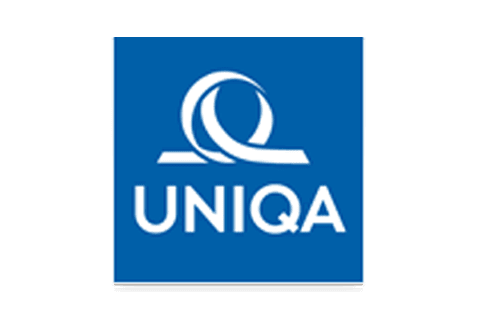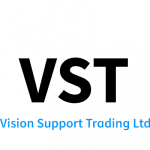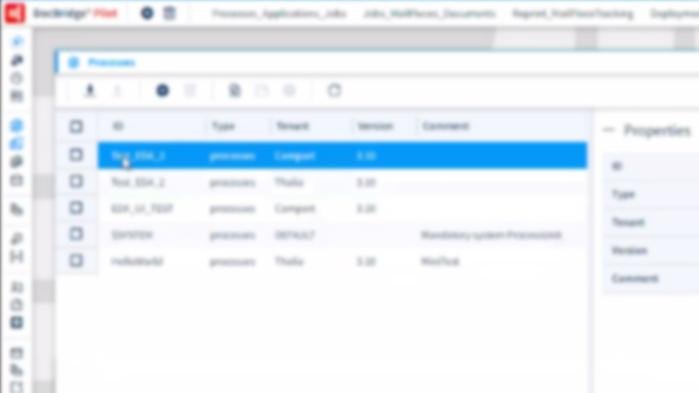Digital Accessibility in Archives
How can historically grown documents from archives be converted into accessible PDF/UA and accessible HTML5?
MoreCompanies and organizations with high document volumes face the challenge of reconciling different input formats with various analog and digital output channels and preparing documents in a way that is suitable for all recipients.
Technological support is provided by scalable, high-performance and platform-independent software solutions for converting, modifying and preparing documents from different sources. This includes the creation of barrier-free documents.
Reading time: 5 min

What to do when the document management system in a company reaches its limits and the risk of failure increases as a result? For UNIQA, one of the largest insurers in Central and Eastern Europe, this was the reason to think about a fundamental renewal of document conversion. DocBridge® Mill Plus, the conversion solution developed by Compart, plays a decisive role in this. Compart partner Docolution implemented the complex requirements for UNIQA.
Together with Docolution GmbH, a proven expert for software and services in the field of customer communication and document output management, the component of real-time document conversion based on DocBridge® Mill Plus was integrated into the document management system.
The scalable and high-performance solution is the tried and tested "Swiss Army Knife" for converting and preparing documents of any format and size. DocBridge® Mill Plus supports all formats commonly used in document processing, including HTML5, which is becoming increasingly popular for display and output on electronic media. What's more, DocBridge® Mill Plus can automatically generate valid, accessible documents in PDF/UA format.
What employees like about DocBridge® Mill Plus is the wide range of functions, which go far beyond actual document conversion. Above all, the speed of processing and the ability to integrate seamlessly into existing structures are a major plus of the Compart solution.
Georg Gfrerer
UNIQA


Accessibility at VST
VST, one of the UK's largest producers of accessible documents for people with visual impairments, has replaced its previous document conversion software with the state-of-the-art solution DocBridge® Mill Plus. The benefit: more time savings and a significantly lower error rate.
View entire reference

Document conversion software
Learn how, with the right solution, documents of any format can be converted, archived and distributed on any channel in an automated and accessible way.
Read more

Accessible documents for all
Read how to future-proof document production and delivery to meet required standards - for all digital channels and print alike.
Get the white paper
Request a Demo
Schedule a demo with a Compart product expert
DocBridge® Mill Plus is made up of individual modules that can be combined in a variety of ways. This, together with the graphically supported configuration interface, which offers a wide range of modules, means that workflows that have already been implemented can be easily extended to include additional functions, for example when new input and output formats are added.
All modules are programmed in an operating system-independent code and function in the same way on all supported platforms.

All core functions are combined in one base module. The objects of the input documents and their properties are picked up by format-dependent input filters. All desired edits can be configured and applied in a format-neutral manner and converted to the desired target formats via format-dependent output filters. Mixing and matching of different formats is thus done in one pass.
In many companies, electronic archiving is still divided: Incoming and outgoing documents are archived differently in separate departments. With different IT systems and metadata. Why this duplication of effort? Why maintain two archive interfaces and tie up valuable resources for this? Why not create a central document archive that is populated with all data? Regardless of whether input or output document archiving is involved, the same tasks are involved, namely the creation, embedding and extraction of metadata and audit-proof storage, preferably in the recognized PDF/A standard. So why run the same process twice? This is not only time-consuming, but also makes it more difficult to research a process.
Modern document management systems such as DocBridge® Mill Plus bring together input and output archives. Instead of two separate archive systems, whose maintenance ties up valuable resources, there is a central archive in which all incoming and outgoing documents are archived in an audit-proof manner. Uniform metadata (e.g. in XML or XMP format) is defined on the input and output side.
The source format, size and structure of the documents do not matter. DocBridge® Mill Plus is capable of preparing any type of file for long-term and secure digital archiving. It is now possible to archive even complex, high-volume spool files in AFP or PCL. If required, specific individual documents can then be extracted from them at the click of a mouse and converted "on-the-fly" into the desired format for display and editing on a PC workstation, for example.

Barrier-free - who doesn't think of flattened curbs, wheelchair ramps and elevators on train platforms? It was not long ago that they found their way into our everyday lives. In the middle of the 80's one began to concern oneself at all intensively with this topic. In the meantime, people even talk about barrier-free Internet, meaning "web offers that can be used by all users without restrictions, regardless of physical and technical possibilities" (Wikipedia). In fact, legislators have been calling for this for some time now. In Germany, the "Ordinance on the Creation of Barrier-Free Information Technology in Accordance with the Act on Equal Opportunities for Persons with Disabilities" (Barrierefreie Informationstechnik-Verordnung, BITV) is an example of this. The BITV is binding for all federal authorities and the basis for the various state laws.
Since fall 2018, public authorities as well as public sector organizations must offer their websites and apps barrier-free. This is required by a current EU directive. According to it, the pages and apps have to be "perceptible, usable, understandable and robust". Users with disabilities must be able to navigate the pages and perceive and understand the information provided. In addition, the content and services should be compatible with various software, such as screen readers for visually impaired and blind people. The directive also stipulates continuous monitoring of digital offerings for accessibility and the establishment of a complaints management system.
At the international level, there are similar legal foundations: the "Rehabilitation Act of 1973 Section 508" in the USA, the "UN Convention on the Rights of Persons with Disabilities" of 2006, the "European Guidelines for the Production of Easy-to-Read Information" of 1998, to name just a few. They all call for the creation of universally accessible documents. To push the whole issue further, the German government adopted the "National Action Plan for the Implementation of the UN Disability Rights Convention" in July 2011.
Accessibility in this context means that media can also be used without restriction by people with disabilities - those with visual and hearing impairments as well as those with motor impairments and cognitive disabilities. For example, people with eye problems are quickly overwhelmed by flashing or otherwise animated texts; for epileptics, they can even trigger life-threatening seizures. Acoustic content, on the other hand, can present deaf users with insurmountable obstacles. Even the language can exclude, one thinks only of with difficulty understandable Schachtelsätze and foreign words.
Hence the call for documents that take these factors into account. This means, for example, high-contrast designs, adaptable font sizes, alternative text offerings for multimedia content, and easy-to-understand language.
Documents often cannot be printed because their structure and format are not compatible with the parameters of the printing and inserting lines. This affects in-house printing as well as external service providers.
Solution
DocBridge® Mill Plus prepares documents so that they can be output on any production line without the need for expensive changes, adjustments and enhancements to the production machines or in the formatting/composition tools.
Benefits for the print service provider
High flexibility with new customers - print jobs can be quickly integrated and processed at any time ("onboarding") - no need to invest in new machines.
Benefit for the customer
Relief in document creation - no formatting changes necessary.
Digitization in document exchange is advancing - with the result that inbound and outbound processing are increasingly merging. Until now, document management has been about reliably producing and sending one's own correspondence. In the meantime, however, it is also necessary to think about which data can simplify the processing of the incoming document for the recipient.
After all, every media break means a loss of information that has to be painstakingly recovered afterwards.
The fact is: using the right data saves time and money. A minimal set of useful information (e.g. a unique identifier for the document) already helps to speed up electronic processing.
The semantic quality of documents also plays an important role independent of legal requirements, for example in omnichannel communication. Today, the recipient determines the communication channel. This means that document creation and dispatch in the company must not only be decoupled, but must also break away from a specific page size ("A4 metaphor") so that the content can also be conveniently made available for other media. However, this is not possible without detailed information being added to the document on the way to output.
Big Data and Artificial Intelligence
In view of Big Data, artificial intelligence (AI) and other current technologies, usable data and the handling of it are moving into the focus of any serious digital transformation anyway. There is no need to talk about standardization and automation in document and output management if the necessary data is not available.
The point is to have not only the text itself, but also the content as data available in such a way that they can be automatically correlated.
This is what makes a multi-level information search possible in the first place. Instead of manually searching a document for specific information, the Web provides the answer itself. It is not a matter of simple search results, but of complex ones that can only be generated by linking different data.
Document processing with DocBridge® Mill Plus - whether batch or transactional - makes handling different file formats and various output channels transparent, secure and flexible.